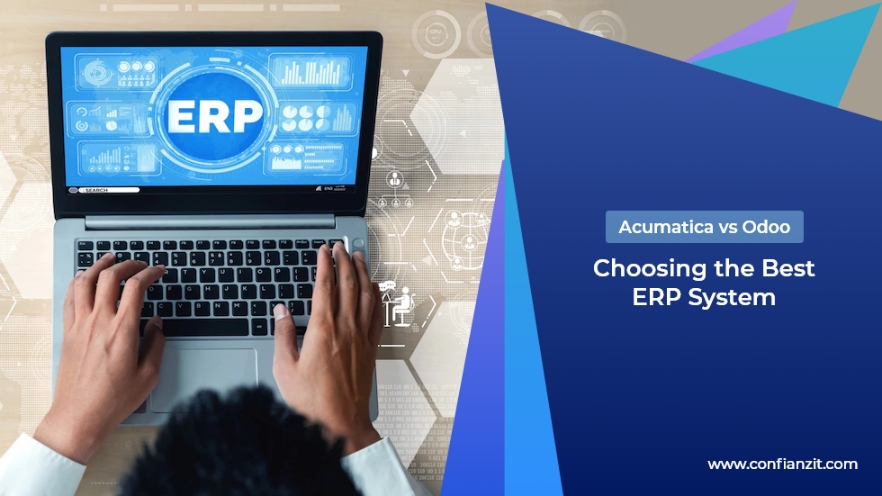An enterprise resource planning (ERP) system is business management software made to help companies manage their operations. It is a system that integrates the data of all the departments in an enterprise and provides a single view of how one department impacts another.
Enterprises use ERP software to have a single source of truth that everyone in the organization can turn to for accurate data, documents, and business analysis.
An ERP should help you reduce costs, improve customer service, and help you grow. However, picking an ERP that isn’t a good fit can significantly impact your productivity and growth.
That’s why it’s essential to compare ERP brands to determine which is best for your business. This article compares two major ERP systems, Acumatica and Odoo, so that you can assess the right fit for your business.
Understanding Odoo
Odoo is a cloud-based, open-source ERP software that offers all the features of enterprise resource planning, CRM, and e-commerce. The company has been around for more than a decade.
The idea for Odoo was born after the founders looked around for an easy-to-use open source ERP. They decided to fill that niche, and Odoo is now one of the most popular open-source ERPs on the market.
Odoo has offices in Paris, New York City, and the San Francisco Bay Area.
What types of companies use Odoo?
As open-source software, Odoo is remarkably customizable if you’re willing to invest the time. Moreover, since Odoo offers a free version of the software, it’s even available for and accessible to start-ups or one-person operations.
Over 7 million users use Odoo, and it’s available in over 20 languages.
Odoo provides solutions for many industries, including manufacturing, retail, healthcare, energy, education, logistics and transport, hospitality, and more.
Because it’s open source, companies can customize the program to suit the needs of the industry.
Odoo is designed for small to medium-sized companies and provides all the functionality needed in such organizations.
What are Odoo’s features?
These are Odoo’s core features.
- CRM: Odoo’s CRM module allows you to manage your customer relationships and sales pipeline. You can create quotes, orders, invoices, and more.
- ERP: Odoo’s ERP module allows you to manage your inventory, production, financials, and more.
- Warehouse management: Odoo’s warehouse management module lets you manage your warehouse operations, from receiving goods to shipping them out.
- HR: Odoo’s HR module allows you to manage the entire HR lifecycle, including recruitment, onboarding, workforce planning, and talent management. With this module, you can automate employee relations tasks and get insights into important HR data.
While these are some of the features Odoo provides, as a modular ERP, you can mix and match features, only paying per function.
Odoo has several tiers when it comes to payment. It has a free community version, which is available to download. However, this version is very bare-bones and doesn’t include any support outside of the community.
This makes it a better fit for extremely small organizations or ones without complicated processes.
Odoo Enterprise is the paid version. You pay per module with additional fees for the number of users. There’s an option to pay by the month or the year.
How do I access Odoo?
Odoo is available on desktop and web, as well as iOS and Android. However, the free version is limited to web and desktop. Mobile application access is reserved for paying customers.
How is Odoo hosted?
Odoo has three options for hosting:
- on-premise
- cloud (only including standard modules produced by Odoo)
- odoo.sh (also a cloud service, but one with support for third-party apps)
Understanding Acumatica
Acumatica is a cloud-based ERP software that can be accessed from anywhere and on any device.
The user interface is designed for ease of use for both the users and the IT departments. In addition, it allows for customization to meet the needs of all types of businesses.
Acumatica also has a robust suite of analytics tools that allow managers to make data-driven decisions, which in turn leads to increased productivity and efficiency in their business operations,
What types of companies use Acumatica?
Acumatica is targeted at small to mid-sized businesses.
It had specific solutions for these industries:
• Manufacturing
• Distribution
• Service industries
• Retail-commerce
• Construction
However, since it’s a very flexible system, Acumatica has customers from various industries.
What are Acumatica’s features?
Acumatica’s features include:
- Inventory management
- Accounting
- Supply chain
- Financial reporting
- Business intelligence
It’s also easily modified since it uses common coding languages for modification instead of proprietary ones. This means there are plenty of third-party solutions.
Acumatica gives quotes based on a business’s specific needs. It structures cost through subscription cost, edition, resources utilized, and level of customer support.
Acumatica doesn’t charge anything per user. Instead, pricing is based on resource utilization.
How do I access Acumatica?
Acumatica doesn’t have a desktop application since it’s entirely cloud-based. However, there is a web application and iOS and Android applications.
How is Acumatica hosted?
Acumatica offers hosting through Amazon’s Web Services (AWS). However, it also allows third-party hosting, if you prefer. However, this is not recommended because you lose out on software maintenance, security, and upgrades.
The different Acumatica Editions include Acumatica Distribution ERP, Acumatica Construction ERP, Acumatica Manufacturing ERP, Acumatica retail commerce ERP, and Acumatica service management ERP.
How To Choose between Acumatica and Odoo
Both of these ERPs are award-winning, and they are targeted toward similar companies.
Very small businesses without the overhead to pay for an ERP and companies who want on-premise hosting should check out Odoo Community.
And while both Odoo and Acumatica are very customizable, Odoo has the edge with a massive marketplace of third-party applications. However, Acumatica is more immediately user-friendly and has stellar customer service while still allowing room for growth and customization.
If you’re trying to decide which ERP is right for you, Confianz is here to help! Our team of experts can help you find the right solution for your business. We are partners with both Acumatica ERP and Odoo ERP, so we can help you with every step, from deciding which ERP to use to implementing it, training your team, and troubleshooting after launch.
Give us a call today for either Odoo ERP Implementation or Acumatica Implementation.
Recommended Posts:







